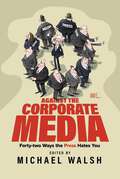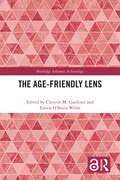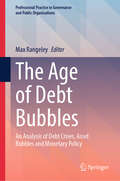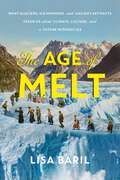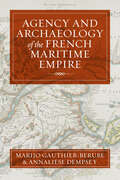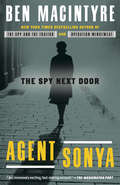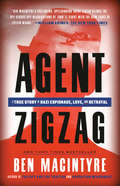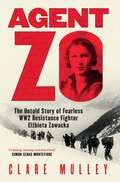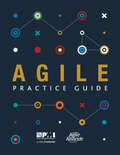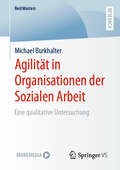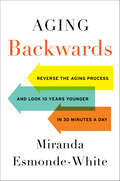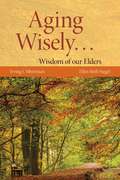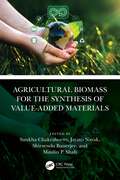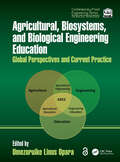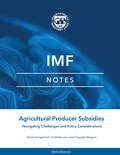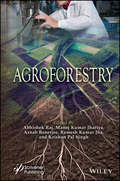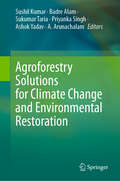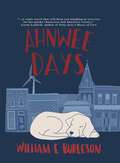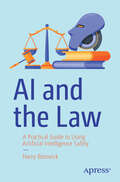- Table View
- List View
Against the Corporate Media: Forty-two Ways the Press Hates You
by the-Pipeline.orgThe citizens of Western democracies have been relentlessly propagandized, lied to, and fed a steady diet of distortions and untruths by their media for decades. Editor Michael Walsh brings together a stellar collection of critical thinkers and writers to explain how and why this is happening, its negative effects on our democracies, and what we can do to reverse it.An informed electorate is a prerequisite for free and fair elections. But rather than striving for accuracy and objectivity, today&’s journalists openly celebrate the death of objectivity, arguing that they have a &“higher duty&” to reject the conservatism, police speech, and suppress news that contradicts the liberal narrative. Now, on the heels of his magisterial volume Against the Great Reset, editor Michael Walsh presents Against the Corporate Media, a collection of more than forty essays on the decline and fall of the American and international news media. The book&’s list of distinguished contributors includes Lance Morrow, Andrew Klavan, John O&’Sullivan, Elizabeth Nickson, Monica Crowley, Charlie Kirk, Glenn Reynolds, Steven F. Hayward, John Fund, Armond White, Michael Ramirez, Walsh, and others. Readers around the world deserve to know how badly their media has been corrupted, how eagerly they have embraced the role of official propagandists, and what a threat to democracy they have become. This book marks an important strike against the corporate media, and its unholy alliance with the enemies of freedom everywhere.
The Age-friendly Lens (Routledge Advances in Sociology)
by Christie M. GardinerThis book engages with the concept of age-friendly environments, adopting multi-perspectivity to demonstrate how age-friendly environments can contribute to shifting how we think, feel and act toward issues of age and ageing and operate as a vehicle to improve understandings of ageism. Drawing from traditionally distinct fields, the text demonstrates theoretical and applied dimensions of the age-friendly global agenda, with several chapters discussing topics that have to date been underrepresented in age-friendly scholarship, including education, health and justice systems. The case studies encourage critical engagement with the issue of ageism in age-friendly scholarship. It presents a clear understanding of the inequalities, challenges and opportunities of ageing and of the ways international, regional, national and sub-national commitments in health, development and human rights, and are further impacted by, ageing through designing, implementing, monitoring and evaluating policies and programmes. The essays utilise a critical and interdisciplinary dialogue to enhance discussion of the age-friendly environment agenda through the inclusion of age-friendly perspectives in addition to its processes and destinations in an ageing society.The book serves as a catalyst to stimulate research, policy and public interest in the physical, social and regulatory environments in which we age and the consequent impact upon health and well-being. It will be of interest to professors, graduate students and undergraduate students in policy, sociology, health, planning and gerontology. It is also recommended reading for policy makers, politicians, think tanks and lobbyists, who are concerned with age all-age-inclusiveness.
The Age of Debt Bubbles: An Analysis of Debt Crises, Asset Bubbles and Monetary Policy (Professional Practice in Governance and Public Organizations)
by Max RangeleyThis book illustrates how central bank policies such as zero percent interest rates have brought about a $300 trillion global debt bubble. The authors, both academics and policy-makers, offer first-hand insights into the economic and financial market mechanisms that have caused the debt bubbles of the past few decades, as well as the political economy that drives such policy-making. Written in an accessible style, the book illustrates how central banks responded to recessions by creating successively larger debt bubbles with lower and lower interest rates, thereby distorting the pricing mechanisms of credit markets and bringing about a series of credit expansions beginning in the early 1980s. This book brings together senior policy-makers from the world of politics and central banking who describe the negative effects of central bank policies of the last generation. The policy-makers include the former manager of the Monetary and Economic Department at the Bank for International Settlements (the central bank of central banks), the Vice President of the Austrian central bank, the former governor of the Spanish central bank and a former senior member of the European Parliament. The core part of the book is written by experienced economists with academic rigor, with other chapters written by senior policy-makers going through the intricacies of the problems of central banking, and how things might be reformed.
The Age of Melt: What Glaciers, Ice Mummies, and Ancient Artifacts Teach Us about Climate, Culture, and a Future without Ice
by Lisa BarilA thought-provoking scientific narrative investigating ice patch archaeology and the role of glaciers in the development of human culture. Glaciers figure prominently in both ancient and contemporary narratives around the world. They inspire art and literature. They spark both fear and awe. And they give and take life. In The Age of Melt, environmental journalist Lisa Baril explores the deep-rooted cultural connection between humans and ice through time. Thousands of organic artifacts are emerging from patches of melting ice in mountain ranges around the world. Archaeologists are in a race against time to find them before they disappear forever. In entertaining and enlightening prose, Baril travels from the Alps to the Andes, investigating what these artifacts teach us about climate and culture. But this is not a chronicle of loss. The Age of Melt explores what these artifacts reveal about culture, wilderness, and what we gain when we rethink our relationship to the world and its most precious and ephemeral substance—ice.
The Age of Voltaire: The Story of Civilization, Volume IX (The Story of Civilization #9)
by Will Durant Ariel DurantThe Story of Civilization, Volume IX: A history of civilization in Western Europe from 1715 to 1756, with special emphasis on the conflict between religion and philosophy. This is the ninth volume of the classic, Pulitzer Prize-winning series.
Agency and Archaeology of the French Maritime Empire
by Marijo Gauthier-Bérubé and Annaliese DempseyThe French maritime empire enabled the continued colonization of territories all over the world from the 17th to the 19th centuries and was built upon the backs of those in lower socioeconomic classes. These classes were heavily impacted by social, political and economic structures. Detailed archaeological case studies using an agency perspective indicate that these lower socioeconomic classes were extremely diverse and dynamic groups that constantly negotiated their identities. These stories are not about the kings, military leaders, and politicians, but rather an exploration of the perspective of those who provided the fuel, both willingly and unwillingly, for the French maritime empire.
Agent Sonya: Moscow's Most Daring Wartime Spy
by Ben MacintyreNEW YORK TIMES BESTSELLER • The &“master storyteller&” (San Francisco Chronicle) behind the New York Times bestseller The Spy and the Traitor uncovers the true story behind one of the Cold War&’s most intrepid spies.&“[An] immensely exciting, fast-moving account.&”—The Washington Post ONE OF THE BEST BOOKS OF THE YEAR: Foreign Affairs, Kirkus Reviews, Library JournalIn 1942, in a quiet village in the leafy English Cotswolds, a thin, elegant woman lived in a small cottage with her three children and her husband, who worked as a machinist nearby. Ursula Burton was friendly but reserved, and spoke English with a slight foreign accent. By all accounts, she seemed to be living a simple, unassuming life. Her neighbors in the village knew little about her.They didn&’t know that she was a high-ranking Soviet intelligence officer. They didn&’t know that her husband was also a spy, or that she was running powerful agents across Europe. Behind the facade of her picturesque life, Burton was a dedicated Communist, a Soviet colonel, and a veteran agent, gathering the scientific secrets that would enable the Soviet Union to build the bomb.This true-life spy story is a masterpiece about the woman code-named &“Sonya.&” Over the course of her career, she was hunted by the Chinese, the Japanese, the Nazis, MI5, MI6, and the FBI—and she evaded them all. Her story reflects the great ideological clash of the twentieth century—between Communism, Fascism, and Western democracy—and casts new light on the spy battles and shifting allegiances of our own times.With unparalleled access to Sonya&’s diaries and correspondence and never-before-seen information on her clandestine activities, Ben Macintyre has conjured a page-turning history of a legendary secret agent, a woman who influenced the course of the Cold War and helped plunge the world into a decades-long standoff between nuclear superpowers.
Agent Zigzag: A True Story of Nazi Espionage, Love, and Betrayal
by Ben Macintyre&“Ben Macintyre&’s rollicking, spellbinding Agent Zigzag blends the spy-versus-spy machinations of John le Carré with the high farce of Evelyn Waugh.&”—William Grimes, The New York Times (Editors&’ Choice) &“Wildly improbable but entirely true . . . [a] compellingly cinematic spy thriller with verve.&”—Entertainment WeeklyONE OF THE TEN BEST BOOKS OF THE YEAR: Entertainment WeeklyONE OF THE BEST BOOKS OF THE YEAR: The New York Times Book Review, The Washington PostEddie Chapman was a charming criminal, a con man, and a philanderer. He was also one of the most remarkable double agents Britain has ever produced. In 1941, after training as German spy in occupied France, Chapman was parachuted into Britain with a revolver, a wireless, and a cyanide pill, with orders from the Abwehr to blow up an airplane factory. Instead, he contacted M15, the British Secret service, and for the next four years, Chapman worked as a double agent, a lone British spy at the heart of the German Secret Service. Inside the traitor was a man of loyalty; inside the villain was a hero. The problem for Chapman, his spymasters, and his lovers was to know where one persona ended and the other began. Based on recently declassified files, Agent Zigzag tells Chapman&’s full story for the first time. It&’s a gripping tale of loyalty, love, treachery, espionage, and the thin and shifting line between fidelity and betrayal.
Agent Zo: The Untold Story of Fearless WW2 Resistance Fighter Elzbieta Zawacka
by Clare Mulley'Deeply researched and written with verve... thoughtful as well as action packed' The Times'Gripping, moving and important' Simon Sebag Montefiore'Agent Zo is a triumph. Absolutely essential reading' Hallie RubenholdThis is the incredible story of Elzbieta Zawacka, the WW2 female resistance fighter known as Agent Zo, told here for the very first time. Agent Zo was the only woman to reach London from Warsaw during the Second World War as an emissary of the Polish Home Army command, and then in Britain she became the only woman to join the Polish elite Special Forces, known as the 'Silent Unseen'. She was secretly trained in the British countryside, and then the only female member of these SOE affiliated forces to be parachuted back behind enemy lines to Nazi-occupied Poland. There, whilst being hunted by the Gestapo who arrested her entire family, she took a leading role in the Warsaw Uprising and the liberation of Poland.After the war she was demobbed as one of the most highly decorated women in Polish history. Yet the Soviet-backed post-war Communist regime not only imprisoned her, but also ensured that her remarkable story remained hidden for over forty years. Now, through new archival research and exclusive interviews with people who knew and fought alongside Zo, Clare Mulley brings this forgotten heroine back to life, and also transforms how we see the history of women's agency in the Second World War.
Agile Practice Guide
by Project Management InstituteAgile Practice Guide – First Edition has been developed as a resource to understand, evaluate, and use agile and hybrid agile approaches. This practice guide provides guidance on when, where, and how to apply agile approaches and provides practical tools for practitioners and organizations wanting to increase agility. This practice guide is aligned with other PMI standards, including A Guide to the Project Management Body of Knowledge (PMBOK® Guide) – Sixth Edition, and was developed as the result of collaboration between the Project Management Institute and the Agile Alliance.
Agilität in Organisationen der Sozialen Arbeit: Eine qualitative Untersuchung (BestMasters)
by Michael BurkhalterIn dem vorliegenden Buch wird Agilität in Organisationen der Sozialen Arbeit untersucht und der Fragestellung nachgegangen, inwiefern eine agile Projektmanagementmethode wie Scrum auf Organisationen der Sozialen Arbeit übertragen werden kann. Durch komplexe Einflüsse aus Umwelt und Gesellschaft werden neue Herausforderungen an die Soziale Arbeit sowie deren Organisationen herangetragen, die einen veränderten Umgang zur Bearbeitung sozialer Probleme erfordern. Agilität bietet als ganzheitliches Konzept einen Lösungsansatz, um in einer veränderten Form reagieren zu können. Dies geht mit einer Vielzahl agiler Methodiken einher. Die qualitative Untersuchung zeigt, dass Agilität organisationale Bedingungen und Logiken erfordert. Sowohl das individuelle Mindset, die Kultur und Strukturen der Organisation sowie das Leadership müssen berücksichtigt werden. Nicht zuletzt leistet die Untersuchung mehrere Ansätze und praktische Herangehensweisen, mit denen, beispielsweise durch den Modellversuch «socialScrum», Agilität in Organisationen der Sozialen Arbeit bei der Bearbeitung sozialer Probleme gelingen kann.
Aging Backwards: Reverse the Aging Process and Look 10 Years Younger in 30 Minutes a Day (Aging Backwards Ser. #3)
by Miranda Esmonde-WhiteThe PBS fitness personality on Classical Stretch and creator of the fitness phenomenon Essentrics offers an eye-opening guide to anti-aging.Miranda Esmonde-White trains everyone from prima ballerinas to professional hockey players to Cerebral palsy patients: what do they all have in common? All of these people are hoping to heal their bodies, prevent further injury, and move optimally and without pain. In fact, they have the same goals as any of us who are trying to stay young, fit, and reverse the hands of time.Because the aging of our bodies occurs in our cells, it must be repaired there too—that’s where Miranda’s highly effective and sought-after techniques come in. The body is programmed to self-destruct as we age, but the speed at which it self-destructs is up to us. Recent scientific studies have proven this fact! In Aging Backwards, Miranda offers a groundbreaking guide on how to maintain and repair our cells, through scientifically designed workouts.Healthy cells prevent joint pain, muscle loss and weak bones—helping to control weight, increase energy, and improve strength and mobility. Miranda offers readers of all ages the tools they need to look and feel young. Complete with tips, tools, and her Eight Basic Age-Reversing Workouts accompanied by instructional photos and web clips, Aging Backwards will help you grow younger, not older!“If you’ve been meaning to start a fitness program but are put off by vigorous gym or yoga sessions, or if you’re hindered by joint or muscle pain, pick up this book.” —Zoomer
Aging Wisely... Wisdom of Our Elders
by Irving Silverman Ellen Beth SiegelAging Wisely… Wisdom of our Elders is a unique resource that reflects the ideas, opinions and experiences of a diverse group of senior citizens. Each story provides a unique perspective on the physical, emotional, and social aspects of growing old from those who have made the journey.
Agnes Varda between Film, Photography, and Art
by Rebecca J. DeRooAgnès Varda is a prolific film director, photographer, and artist whose cinematic career spans more than six decades. Today she is best known as the innovative "mother" of the French New Wave film movement of the 1950s and '60s and for her multimedia art exhibitions. Varying her use of different media, she is a figure who defies easy categorization. In this extensively researched book, Rebecca J. DeRoo demonstrates how Varda draws upon the histories of art, photography, and film to complicate the overt narratives in her works and to advance contemporary cultural politics. Based on interviews with Varda and unparalleled access to Varda's archives, this interdisciplinary study constructs new frameworks for understanding one of the most versatile talents in twentieth and twenty-first century culture.
Agricultural Biomass for the Synthesis of Value-Added Materials
by Sankha Chakrabortty Jayato Nayak Shirsendu Banerjee Maulin P. ShahThis book is a comprehensive guide to bioconversion approaches based on microorganisms and enzymes for the valorization of underused wastes of diverse categories to produce new products. Optimized conditions for microbial and enzymatic valorization are discussed, along with related biotechnological considerations, environmental considerations, bioprocess development, obstacles, and future outlooks. Biofuels, bioenergy, and other platform chemicals are only some of the products that can be produced through this book's explanation of the microbiological processes involved in the bioconversion and valorization of wastes.
Agricultural, Biosystems, and Biological Engineering Education: Global Perspectives and Current Practice (Contemporary Food Engineering)
by Umezuruike Linus OparaAgricultural engineering, developed as an engineering discipline underpinned by physics, applies scientific principles, knowledge, and technological innovations in the agricultural and food industries. During the last century, there was exponential growth in engineering developments, which has improved human wellbeing and radically changed how humans interact with each other and our planet. Among these, “Agricultural Mechanization” is ranked among the top 10 in a list of 20 Top Engineering Achievements of the last century that have had the greatest impact on the quality of life.While many success stories abound, the problems of low appeal among students, identity crises, and limited job opportunities in many climes continue to trouble the discipline’s future in many parts of the world. Yet agriculture and agricultural engineering remain fundamental to assuring food and nutrition security for a growing global population.Agricultural, Biosystems, and Biological Engineering Education provides the first comprehensive global review and synthesis of different agricultural, biosystems, and biological engineering education approaches, including a detailed exposition of current practices from different regions.Key Features: Describes novel approaches to curriculum design and reform Outlines current and emerging epistemology and pedagogies in ABBE education Provides a framework to grow agricultural engineering in Africa and other developing regions Highlights the role of ABBE education in the context of the SDGs Presented in 3 parts and containing 42 chapters, this book covers the historical evolution of agricultural engineering education and discusses the emergence of biological and biosystems engineering education. It will appeal to engineers and other professionals, education planners and administrators, and policy makers in agriculture and other biological industries.
Agricultural Producer Subsidies: Navigating Challenges and Policy Considerations
by MoguesA report from the International Monetary Fund.
Agroforestry: Issues And Challenges
by Manoj Kumar Jhariya Arnab Banerjee Abhishek Raj Ramesh Kumar Jha Krishan Pal SinghThis book offers comprehensive insights into the management of agroforestry for livelihood security and sustainable development in the tropics, addressing ecological interactions, productivity, and the monetization of carbon credits, while also outlining a future roadmap and policy challenges. Agroforestry is a brilliant land use farming practice that covers 1.6 billion hectares (78 percent in the tropics and 22 percent in the temperate regions) to enhance plant diversification, productivity, and livelihood across generations, maintaining eco-restoration. It ensures socioeconomic upliftment and a standard livelihood for people along with many ecosystem services for sustainable development under resilient climates, which are today’s key topics popularized among policy makers, stakeholders, scientists, ecologists, and climate supporters in the tropical world. However, more than 75 percent of the world’s poor directly depend on natural resources for their livelihoods. Adopting climate resilient agroforestry not only maximizes productivity and farmers’ socioeconomic status but also mitigates climate change issues through carbon sequestrations for better carbon management in the tropics. This book addresses agroforestry management for livelihood security and sustainable development in the tropics. Readers will earn about ecological interactions and productivity in tropical agroforestry ensuring greater ecosystem services and livelihood resilience under changing climates, as well as building livelihood resilience through monetization of carbon credits in agroforestry in the tropics. Livelihood and sustainability-based policy in agroforestry, its challenges, and a future roadmap are also covered. This volume provides new insights related to updated research, development and extension activities for combating climate change through carbon sequestration to enhance intensify greater productivity, and livelihood and ecosystem services for ensuring the goals of sustainable development.
Agroforestry Solutions for Climate Change and Environmental Restoration
by Sushil Kumar Badre Alam Sukumar Taria Priyanka Singh Ashok Yadav A. ArunachalamThis book discusses the possibilities, reach, challenges, and limitations of agroforestry in new contexts where the security of food, nutrition, and the environment are equally vital. The focus of each chapter in the book is on the potential for agroforestry to address pressing issues such as sustainability, food, fodder, nutrition, and environmental security, as well as to offer, support, regulate, and to provide cultural services to society. Some of the devoted chapters in the book also go into detail on the scope and restrictions of agroforestry owing to existing regional and climatic barriers/problems, in addition to in-depth discussion of prospects of agroforestry in changed climate scenarios to cater to current and future needs. The major focus of this book is to aggregate up-to-date and recent agroforestry research studies/achievements to make them accessible to all the stakeholders for their use and to disseminate how agroforestry systems are playing a crucial role in tackling many difficulties during the changing climate and environmental crisis. The stakeholders find this book helpful in learning agroforestry and its importance in situations with changing climatic conditions across the globe. Additionally, it may also be helpful for policy makers for formulating policies pertaining to the adaptation and mitigation of climate change, the conservation of natural resources, and food and nutritional security, including sustainable development through agroforestry.
Aguahoja: Hexes: The Mediated Matter Group, MIT Media Lab
by Cultural Programs of the National Academy of SciencesFrom March 1 through July 31, 2018, Cultural Programs of the National Academy of Sciences presented the exhibition Aguahoja: Hexes by Neri Oxman and The Mediated Matter Group, MIT Media Lab. This catalog documents the exhibition. Nature made us half water. With water, the biological world facilitates the customization of an organism’s physical and chemical properties—through growth and degradation—as a function of genes and environmental constraints. Designed goods, however—including garments, products, and buildings—contain little or none of the fluid that gives life. More than 300 million tons of plastic are produced globally each year, leaving harmful imprints on the environment: our seas, our trees, our bodies. Less than 10% of this material is recycled, and the rest becomes waste, dumped into landfills and oceans, where they leach out toxic chemicals and take thousands of years to degrade. Oxman and The Mediated Matter Group at MIT Media Lab aim to subvert this cycle. Their Aguahoja series features structures that are digitally designed and robotically fabricated out of the most abundant materials on our planet—the very materials found in trees, crustaceans, and apples. Cellulose, chitosan, and pectin are parametrically compounded, functionally graded, and digitally fabricated to create biodegradable composites with functional, mechanical, chemical, and optical gradients across length scales ranging from millimeters to meters. The structures are designed as if they were grown; no assembly is required. This exhibition featured four structures from the series.
Ahnwee Days
by William E Burleson Eilidh MuldoonLife is not going as planned for Sybil Voss. Growing up in a small town on the Great Plains, she had one goal: to get out as soon as she could. She succeeded, moving to New York after college and building a reasonably happy life. But now she' s back, the sole caregiver for her elderly father who suffers from “ media-induced psychosis” and can only communicate through TV sitcoms.But Sybil' s making the best of it, running her antique business, “ New York ' Tiques,” serving as mayor (since no one else ran), and organizing a town festival, Ahnwee Days.Problem is, things are not going well for her tiny town of Ahnwee. What was once a hopping little city with actual businesses and families ism now slowly becoming a ghost town. The remaining 200 residents have to put up with the insult of a lake so polluted that it glows in the dark, a wind turbine on the edge of town that occasionally golfs cars into the rough, and the ever-present smell of pig shit from the factory hog farm on the hill. How could it get worse?It can and does. The pig farmer says that the land the town sits on is his, and he wants to expand his manure pond. At the same time, a nearby casino may also have a claim to the land, and they want it for an RV park. That's not all: Green Systems Power, a wind turbine factory, wants the town' s land for parts storage, and they' ve bought a county commissioner to make it happen.With her friends, a lonely widowed yarn store owner and a midget— sorry, little person— beef jerky king with anger management issues, Sybil is fighting back. As Sybil says, “ Sure, Ahnwee is just an antique shop, strip joint, and meth lab, but it' s OUR antique shop, strip joint, and meth lab.” Along the way we meet a mayor of a rival town with unclear motives, a nerdy strip club owner and his “ girls,” and an existential— and suicidal— town pastor. Our heroes hold a town meeting and a press conference, and they appeal to the county board, all with the same result: humorously dismal failure. The only
Ahoti: A Novel
by Eva Marie Everson Miriam Feinberg VamoshA masterful retelling of Tamar's story of redemption, faith, healing, and justice. "As an author of biblical fiction, I know the amount of research and work that goes into crafting a story like this. Miriam Feinberg Vamosh and Eva Marie Everson comprise the perfect team." —Jerry B. Jenkins, THE CHOSEN series. Ravaged by one brother, silenced and betrayed by another, and abandoned by her father King David, Tamar—once beloved daughter of the king of Israel, and healer of the court—suddenly finds herself in exile, fleeing for her life. But the story continues where the scriptures end: a dangerous journey and tenacious pursuit of her true identity and calling brings her full circle, to her rightful place in the kingdom. Enthusiasts of Biblical Fiction will love Ahoti. Ahoti brings to life the Old Testament story of the biblical princess Tamar, the daughter of David, King of Israel. The familiar Bible story ends with Tamar living "desolate" (2 Samuel 13:20), but master storytellers Miriam Feinberg Vamosh and Eva Marie Everson take readers beyond this sorrowful ending to a horizon of hope, thanks to their brilliant adaptation of an ancient anonymous manuscript, purportedly written by Gad the Seer (1 Chronicles 29:29), which was discovered in India in the early 18th century. Beyond the biblical text, this manuscript provides a surprising conclusion, which has powerful modern-day significance. Rich with cultural, biblical, and historic detail, and spiritually compelling, Ahoti will inspire readers to overcome humiliation, pain, betrayal, and bitterness, to embrace a life of purpose. "Vamosh (The Scroll) and Everson (The Ornament Keeper) put an empowering spin on the biblical story of Tamar, the daughter of King David...[I]t's a welcome and often gripping portrait of the unsung courage of a biblical heroine."—Publishers Weekly.
AI and the Law: A Practical Guide to Using Artificial Intelligence Safely
by Harry BorovickLearn how to maximize your use of, and benefit from AI, personally and professionally while staying safe. To satisfy professionals and businesses trying to modernize their approaches to work and personal tasks, this book will explain some of the basics of what AI is, what AI is likely to look like in the near future, and how not to get stung using it. You’ll quickly realize that AI isn’t coming, it’s here, along with its opportunities and challenges. While some of the advantages of using AI tools may seem too good to be true, you’ll discover that the key to navigating the early stages of the AI era is to understand its guiding principles and then to prioritize the guidelines. The book features general situations and use cases to help you experience AI for fun and for work while retaining the benefits, profits, creations, outputs, and efficiencies of it. If you’re going to use AI in your daily career, whether as a student, creative, executive, marketer or in sales this book will help you understand how to bypass obstacles and get value from AI with the guidance of an AI and tech lawyer. What You Will Learn Identify, debunk, and protect against business and legal risk in the AI eraDiscuss these issues on a high level with CTOs and COOsSee how professionals can mutually use AI to their benefit Who This Book is For Anyone who wants to know whether AI is really going to change the world through the lens of their industry, or to simply understand how AI can be safely harnessed to maximize daily value while minimizing practical risks.
